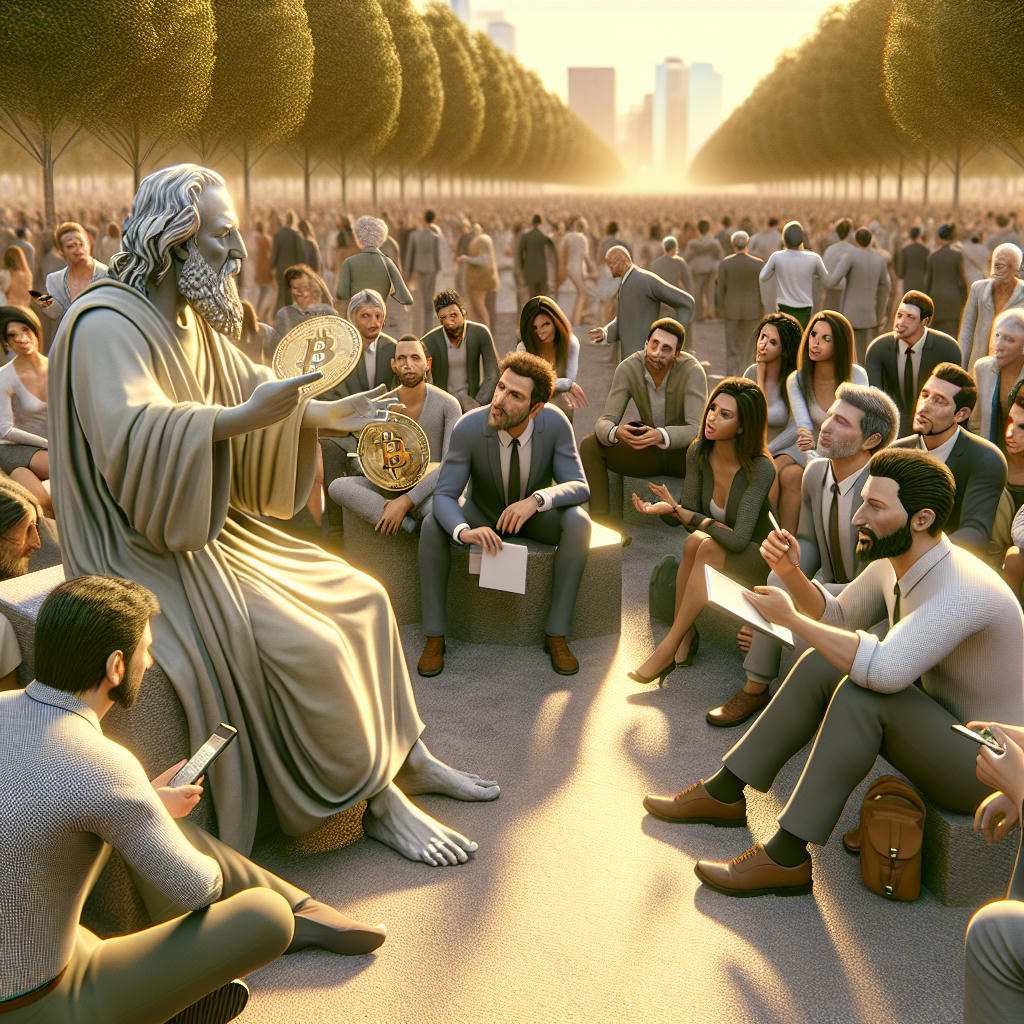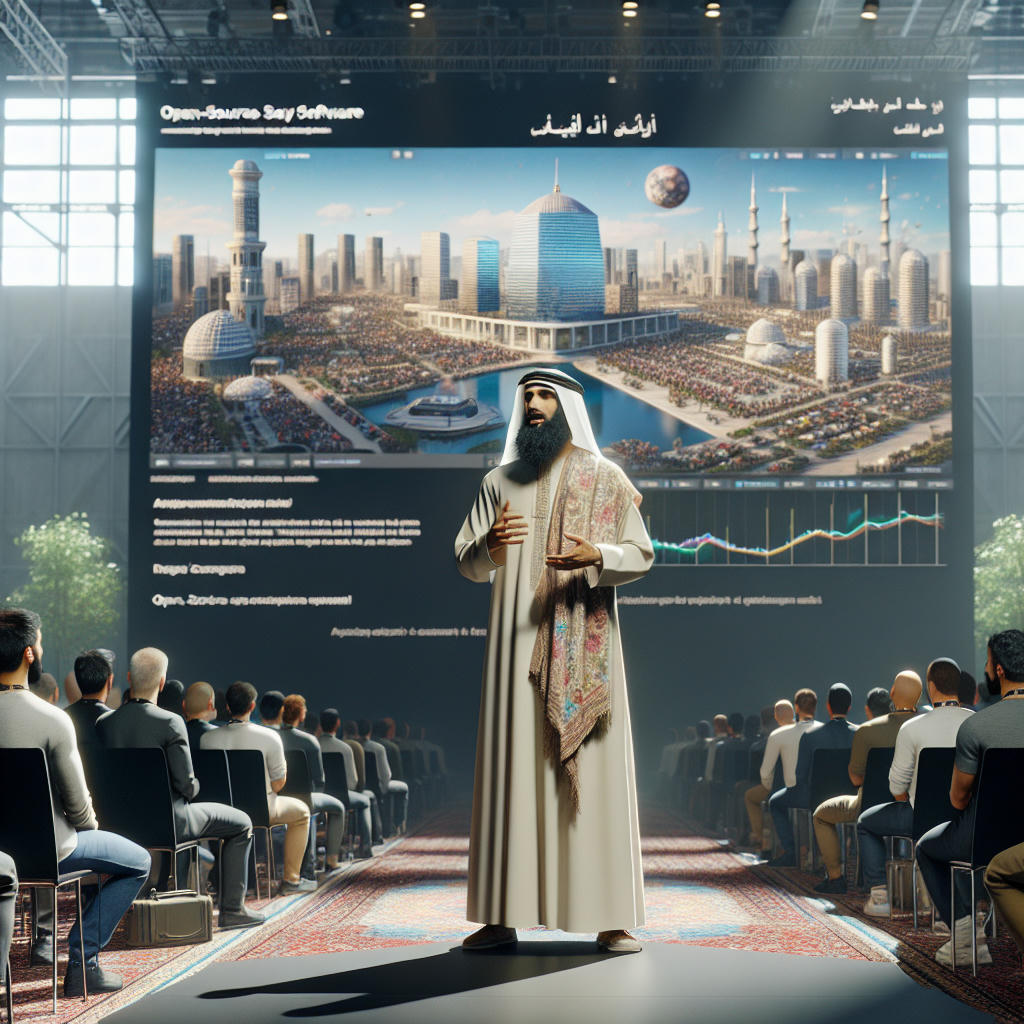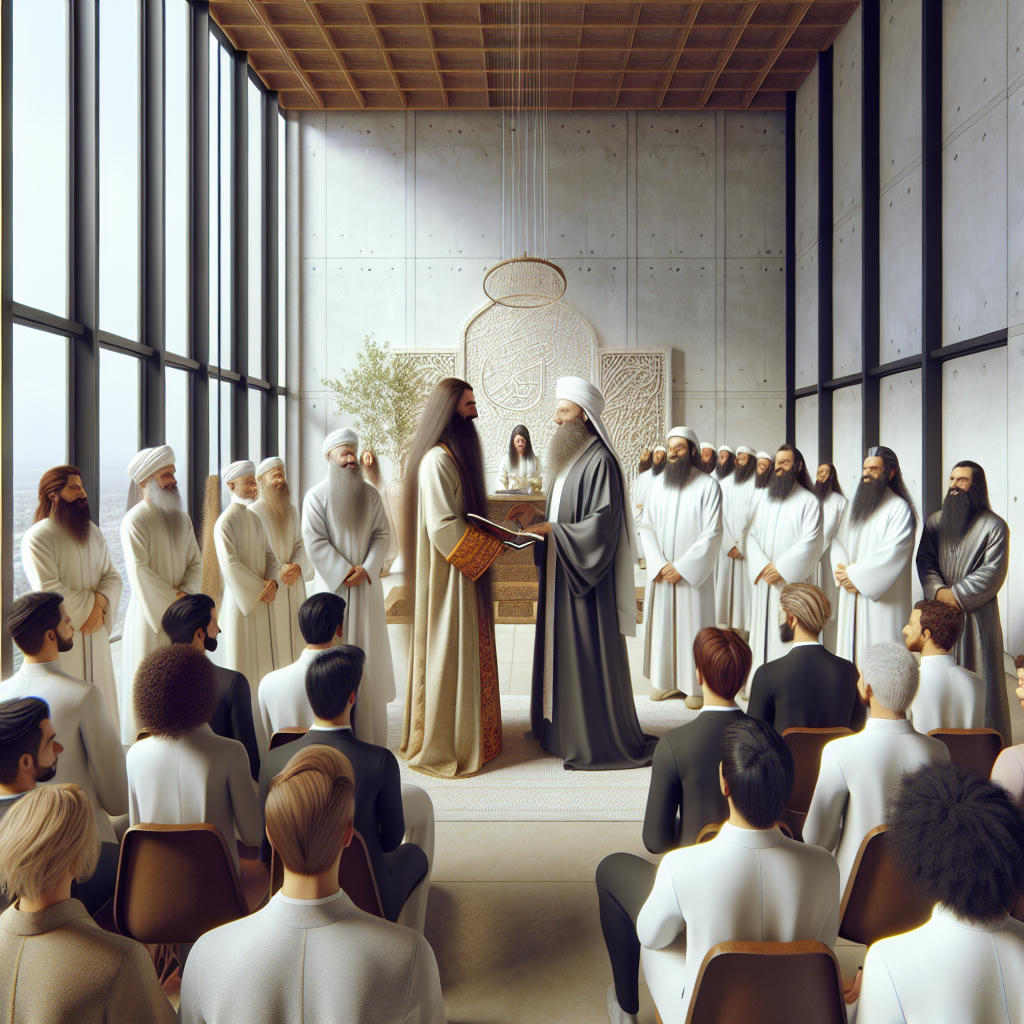In the year 2023, the world was in turmoil. Political divisions, environmental crises, and technological advancements had created a landscape both wondrous and terrifying. Amidst this chaos, a figure emerged, one that many had long awaited but few truly expected: Jesus Christ.
His arrival was not heralded by angels or accompanied by miraculous signs. Instead, he appeared quietly, almost unassumingly, in a small town in the heart of the United States. Clad in simple, modern clothing, he walked among the people, observing the world that had evolved since his last visit. His mission was clear: to preach about the things he couldn't during his previous coming, to address the complexities of the modern age.
The Sermon on the Blockchain
Jesus began his teachings in a public park, where a curious crowd had gathered. He spoke of many things, but one topic that particularly intrigued the audience was Bitcoin and the concept of decentralized finance.
"Money, in its essence, is a tool," he said, his voice calm yet commanding. "It can be used for good or for ill. Bitcoin, and other cryptocurrencies, offer a way to decentralize power, to give control back to the people. But remember, it is not the tool that is inherently good or evil; it is how you use it."
He explained how blockchain technology could bring transparency and fairness to financial systems, reducing corruption and empowering individuals. Yet, he also warned of the dangers of greed and the potential for misuse.
The Gospel of Open Source
Next, Jesus turned his attention to the world of technology and software. He spoke passionately about the principles of open-source software, drawing parallels to the communal living and sharing of resources that he had once advocated.
"Open-source software is a testament to the power of collaboration and community," he said. "It is a way for people to come together, to share their knowledge and skills for the greater good. In this, we see a reflection of the Kingdom of Heaven, where all are welcome, and all contribute to the common good."
He encouraged developers to continue creating and sharing their work freely, to build a digital world that was open, inclusive, and just.
The Parable of Netiquette
In an age where social media had become a dominant force, Jesus knew he had to address the behavior and ethics of online interactions. He spoke of netiquette, the code of conduct for the digital world.
"Treat others online as you would in person," he advised. "Behind every screen is a human being, deserving of respect and kindness. Use your words to build up, not to tear down. Let your digital presence be a light in the darkness."
He emphasized the importance of empathy, understanding, and responsible communication in the digital age, urging people to use social networks as tools for connection and positive change.
The Beatitudes of Love
One of the most anticipated topics was Jesus' stance on gay marriage. In a world where LGBTQ+ rights were still a contentious issue, his words carried immense weight.
"Love is the greatest commandment," he began. "It transcends all boundaries, all labels. Love is love, and it is holy. Gay marriage is a celebration of that love, a union blessed by the divine. Let no one cast stones, for we are all children of God, deserving of love and acceptance."
His message was clear and unequivocal: love in all its forms was sacred and should be honored and respected.
The Wisdom of Artificial Intelligence
Finally, Jesus addressed the rise of artificial intelligence, a topic that both fascinated and frightened many. He spoke of AI as a tool that, like all others, could be used for good or ill.
"Artificial intelligence holds great potential," he said. "It can solve problems, create art, and even save lives. But it must be guided by wisdom and compassion. Use AI to enhance humanity, not to diminish it. Let it be a servant, not a master."
He urged developers and users alike to approach AI with caution and ethical consideration, ensuring that it served the greater good and upheld the values of justice and mercy.
A New Covenant
As Jesus continued his teachings, it became clear that his message was one of unity, compassion, and progress. He called for a new covenant, one that embraced the advancements of the modern world while holding fast to the timeless principles of love, justice, and community.
His return was not just a fulfillment of prophecy but a call to action. He challenged the world to rise above its divisions, to use its tools and technologies for the betterment of all, and to create a future that was inclusive, just, and filled with love.
In the end, Jesus' second coming was not about miracles or divine intervention. It was about reminding humanity of its potential, its capacity for good, and its responsibility to each other and the world. His teachings resonated deeply, sparking a movement that sought to build a better, more compassionate world.
And so, the modern gospel of Jesus Christ spread, not through ancient texts or sacred rituals, but through the hearts and minds of people ready to embrace a new era of understanding and love.


